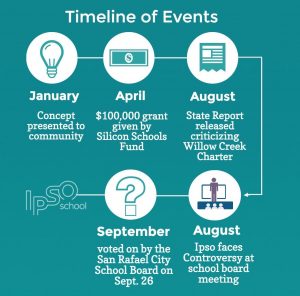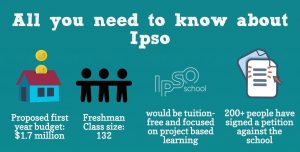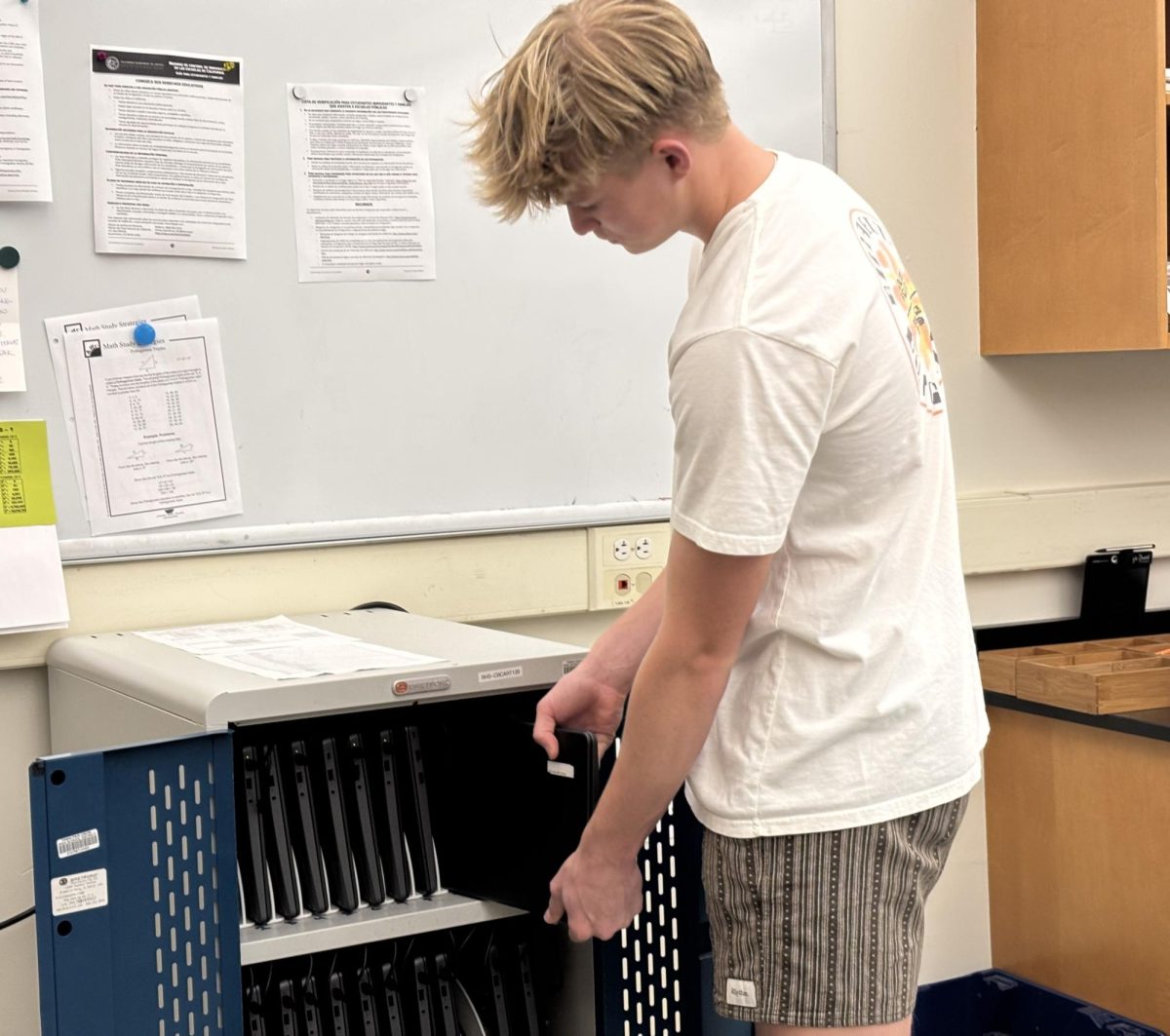Former assistant principal Katy Foster has returned to Redwood as an interim administrator amidst her work on a new campaign to start a public, tuition-free charter high school in San Rafael.
Foster, who is the founding principal of Ipso (Latin for “itself), the proposed school, formally resigned from Redwood at the end of the last school year. However, she has stepped in for the first month this year to fill an administrative gap as Redwood searches for a new assistant principal.
Redwood assistant principal Lisa Jimenez accepted another position just days before the start of the school year, prompting Principal David Sondheim to ask Foster and former assistant principal Sue Chelini to fill the vacancy. Currently, Foster and Chelini split the duties between morning and afternoon, respectively.
“It’s not an ideal situation, but we are incredibly fortunate that we have two people who were able to substitute that are both experienced at what they do and with Redwood,” Sondheim said.
According to Sondheim, the search for a permanent replacement is already under way, with interviews being held and hopes for a candidate to be selected and approved by the Sept. 6 TUHSD board meeting.
For Foster, the idea for the school started in Feb. 2015, when she and Drake science teacher and eventual Ipso co-founder Erin Ashley began dreaming up models for a school with a flexible learning structure to offer community members an alternative style of learning.
“We asked the biggest question in the world, ‘How do you start a new public high school?’” Foster said.
The duo then participated in a start-up schools fellowship where they received training on how to lead in an alternative learning environment. This subsequently helped them decide to move forward with their idea, introducing it to the public in Jan. 2016.
“We had pursued filling in our model, gauging community support for another public school option and had secured some funding, so when all three of those things lined up that’s when we were able to become more public with it,” Foster said.

Ipso officially submitted their petition to become a San Rafael District school in June and has so far received mixed reactions.
“We have strong parent support from parents who want another option for their kids, and we also have a strong opposition,” Foster said. “There was a board meeting on [Aug. 22] and it seems like most of the people who spoke against us were teachers. There’s a lot of questions that people have, but we feel pretty confident that when people get their questions answered, they’ll accept us more.”
According to Foster, the school would focus on group and project-based learning that exposes students to problems through an interdisciplinary approach.
However, this proposal comes at a time when the Marin community may be questioning the idea of charter schools. Willow Creek Academy in Sausalito, one of only two charter schools currently in the county, is under review from California’s Fiscal Crisis and Management Assistance team over concerns that funds have been disproportionately diverted to the charter school over the other K-8 school in the district, Martin Luther King.
Some community criticism comes from the belief that many of the perceived issues Ipso seeks to remedy could be solved by working with the existing schools in the district, not creating an entirely different school. More than 200 people in the San Rafael community have signed a petition against the school.
However, Foster believes a charter school, with its less rigid structural and scheduling state requirements, offers flexibility and a fresh start that are key to tackling differences in learning.
“I’ve been in education my whole career, which is 25 years that I’ve been in public schools, and I’ve been trying to change the system to have a better outcome for all students from within the structure,” Foster said. “But after researching how kids learn and seeing what education research says about structures that support that kind of learning, we decided that we should start a school that blows up the confines of a traditional school schedule so that we weren’t beholden to specific periods.”
The proposed school would open in the fall of 2017 with just a freshman class, subsequently adding a grade each year until it begins running at full capacity with 528 total students in 2020.
Ipso’s application for public funding will be reviewed by the San Rafael City School Board and accepted or denied at the Sept. 26 board meeting.
The school received a $100,000 dollar grant from the Silicon Valley Schools Fund but will rely on the San Rafael City School District for the rest of their funding if it is approved. As a basic aid district, San Rafael schools receive funding based on their number of students, meaning that with a proposed freshman class of 132 students, Ipso would receive $1.7 million in funding.

According to Foster, the San Rafael community was specifically chosen for the location because of its diversity and potential for community connections.
“San Rafael is diverse and the biggest city in Marin, and a lot of our model has to do with community partnerships and internships so locating there was because of that,” said Foster.
Ipso has established partnerships with Canal Alliance and Marin community clinics.
While Foster emphasized that Ipso students will be academically ready for traditional college, as all courses will be UC A-G approved, she acknowledged that transitioning back to a college-style learning environment may be an adjustment.
“I listened to a panel of students who in high school were in more alternative settings, and then in college they were a little bit shocked,” Foster said.
Pending approval and enough public interest, spots at the school would be given away in a lottery, with preference being given to students from San Rafael. However, any Marin student, even those outside the district, could apply to the school.
Ultimately, Foster said that the choice to leave Redwood was difficult but that she is excited to tackle new challenges.
“It was a hard decision. [Redwood is] a comfortable and known job, so it’s definitely a risk to leave,” Foster said. “But I think it’s a risk worth taking.”





